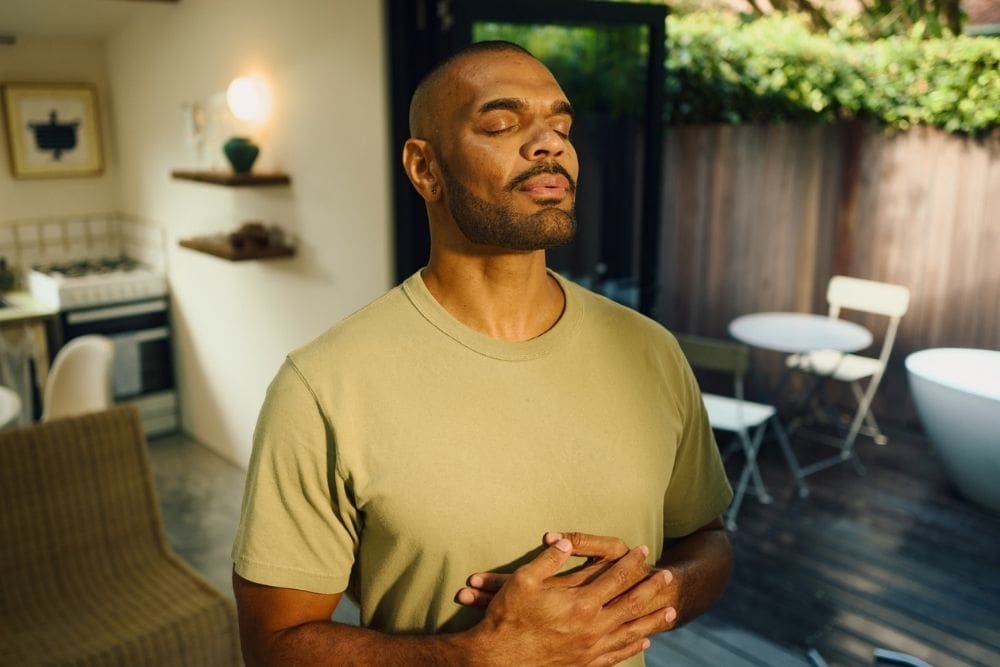Anxiety has a way of taking over fast. One moment you’re fine, and the next your heart is racing, your chest feels tight, and your thoughts won’t slow down. You might not know what to do, and that uncertainty can fuel even more panic. The good news is, you don’t need anything fancy to find relief—just your own breathing.
Breathing exercises are a simple yet effective way to calm anxiety, reduce physical symptoms, and give your mind space to reset. When anxiety feels overwhelming, grounding techniques like mindful breathing can make a big difference in how you cope.
What Happens in Your Body During Anxiety
Anxiety is more than worry—it triggers real physical changes in your body. When your brain senses a threat, whether real or imagined, it activates your fight-or-flight response. This causes a surge of stress hormones, like adrenaline and cortisol, that prepare you to respond quickly.
While this response is helpful in dangerous situations, it can feel unbearable when it’s triggered by everyday stress. You might notice:
- A racing or pounding heartbeat
- Rapid or shallow breathing
- Sweating or trembling
- Tightness in your chest or throat
- Difficulty concentrating
Rapid, shallow breathing is one of the most common symptoms of anxiety. It lowers the amount of carbon dioxide in your blood, which can make you feel lightheaded, dizzy, or even more anxious. This is where breathing exercises can help—they slow down your breath, restore balance, and send a signal to your brain that it’s safe to relax.
Why Breathing Helps Calm Anxiety
Your breath is directly connected to your nervous system. Slow, deep breathing activates the parasympathetic nervous system, which is sometimes called the “rest and digest” system. This system counteracts anxiety’s fight-or-flight response by slowing your heart rate, lowering blood pressure, and relaxing your muscles.
When you focus on your breath, you’re also redirecting your attention away from racing thoughts. It becomes an anchor in the present moment, reminding you that you are safe here and now.
Breathing Exercises You Can Try
Different breathing exercises work for different people. The key is to practice regularly so that when anxiety hits, you can rely on these tools more easily. Here are a few techniques to get you started:
Box Breathing
Box breathing is a structured technique that can quickly bring calm and focus.
- Inhale through your nose for 4 counts.
- Hold your breath for 4 counts.
- Exhale slowly through your mouth for 4 counts.
- Hold again for 4 counts.
- Repeat for several rounds.
This method not only calms your body but also helps you regain control when you feel overwhelmed.
4-7-8 Breathing
This technique is often used to quiet the mind and ease physical tension.
- Inhale quietly through your nose for 4 seconds.
- Hold your breath for 7 seconds.
- Exhale forcefully through your mouth for 8 seconds.
- Repeat up to 4 times.
The longer exhale helps release tension and can prepare your body for relaxation or even sleep.
Belly Breathing
This technique encourages you to breathe deeply into your diaphragm instead of your chest.
- Sit or lie down in a comfortable position.
- Place one hand on your chest and the other on your belly.
- Inhale deeply through your nose, letting your belly rise while your chest stays still.
- Exhale slowly through pursed lips, feeling your belly fall.
- Continue for 5–10 minutes.
This type of breathing is especially helpful for reducing physical symptoms like a rapid heartbeat or chest tightness.
Alternate Nostril Breathing
Common in yoga practice, this exercise balances both the body and mind.
- Sit comfortably and close your eyes.
- Place your right thumb over your right nostril and inhale deeply through your left nostril.
- Close your left nostril with your ring finger, release your right thumb, and exhale through your right nostril.
- Inhale through the right nostril, then close it again and exhale through the left.
- Continue alternating for several minutes.
This practice can promote a sense of balance and calm, especially if your thoughts feel scattered.
How to Get the Most Out of Breathing Exercises
- Practice daily. The more you practice, the easier it will be to use these techniques when anxiety strikes.
- Create a calming environment. Dim the lights, play soft music, or sit outside in nature to make breathing exercises more effective.
- Pair with other grounding strategies. Breathing works well alongside mindfulness, journaling, or progressive muscle relaxation.
- Be patient with yourself. If your mind wanders, gently bring it back to your breath without judgment.
Anxiety can feel overwhelming, but your breath gives you a way to take back control, even in the hardest moments. By practicing simple breathing exercises, you can calm your body, quiet your mind, and remind yourself that peace is possible.
Managing anxiety takes patience and practice, but you don’t have to walk that path alone. At Creekside Behavioral Health in Kingsport, Tennessee, we’re here to help you discover healthy ways to find calm and strength—one step, and one breath, at a time. Reach out to us today to learn more.





